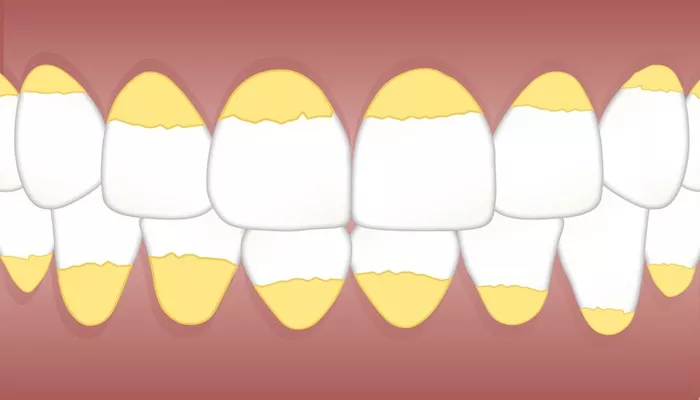Gum disease, also known as periodontal disease, is a common condition that affects the gums and bones supporting the teeth. Left untreated, it can lead to tooth loss and other serious health issues. Treating gum disease involves various procedures and treatments, each with its own costs. This article will explore the different factors influencing the cost of treating gum disease, the types of treatments available, and how to manage expenses effectively.
What Is Gum Disease?
Gum disease is a result of the accumulation of plaque—a sticky film of bacteria—on the teeth and gums. There are two main stages of gum disease:
Gingivitis: The earliest stage, characterized by red, swollen gums that may bleed easily. Gingivitis is usually reversible with proper dental care and good oral hygiene.
Periodontitis: A more severe form of gum disease that can lead to the destruction of the supporting bone and tissue around the teeth.
Periodontitis requires more intensive treatment to manage and control.
SEE ALSO: How to Fix Periodontal Gum Disease
Factors Influencing The Cost of Treating Gum Disease
Several factors affect the overall cost of treating gum disease:
Severity of the Disease: Early-stage gum disease, such as gingivitis, is less expensive to treat than advanced periodontitis.
The extent of the disease dictates the complexity and duration of treatment.
Type of Treatment Required: Different treatments are available depending on the severity of gum disease. These range from non-surgical interventions to more invasive surgical procedures.
Geographic Location: The cost of dental treatments can vary significantly depending on the location. Urban areas with a higher cost of living typically have higher dental fees compared to rural areas.
Dental Insurance: Insurance coverage plays a significant role in determining out-of-pocket costs for gum disease treatment. Policies vary, and it’s essential to understand what your insurance covers.
Dentist’s Experience and Reputation: More experienced dentists or specialists may charge higher fees for their services.
However, this can also translate to more effective and efficient treatment.
Types of Treatments And Their Costs
Non-Surgical Treatments
Professional Dental Cleaning
Description: This is a routine cleaning performed during regular dental checkups. It helps remove plaque and tartar from the teeth and beneath the gums.
Cost: Typically ranges from $75 to $200 per visit. Dental insurance often covers part or all of the cost.
Scaling and Root Planing
Description: A deep-cleaning procedure that involves removing plaque and tartar from above and below the gumline and smoothing the tooth roots to promote healing.
Cost: Ranges from $200 to $400 per quadrant (a mouth has four quadrants). Total cost can be $800 to $1,600.
Antibiotics and Antimicrobial Treatments
Description: Medications may be prescribed to reduce bacterial infection in the gums. These can include mouth rinses, gels, or oral antibiotics.
Cost: Oral antibiotics can cost $10 to $50 per prescription. Local antibiotic treatments (applied directly to the gums) can range from $30 to $100 per application.
Surgical Treatments
Flap Surgery (Pocket Reduction Surgery)
Description: This procedure involves lifting the gums to remove tartar and then suturing them back in place for a tighter fit around the teeth.
Cost: Typically ranges from $500 to $3,000 depending on the extent of the surgery.
Bone Grafts
Description: Used to replace bone lost due to gum disease. The graft can be made from your bone, a donor, or synthetic materials.
Cost: Can range from $250 to $3,000 per area treated.
Soft Tissue Grafts
Description: This procedure involves taking tissue from another part of the mouth or using donor tissue to cover exposed tooth roots or repair gum loss.
Cost: Typically ranges from $500 to $1,500 per site.
Guided Tissue Regeneration
Description: A surgical procedure that uses biocompatible materials to encourage bone and tissue growth.
Cost: Ranges from $500 to $3,000 per site.
Laser Therapy
Description: Lasers are used to remove infected gum tissue and promote healing.
Cost: Ranges from $250 to $1,000 per session, depending on the severity of the gum disease and the specific laser technology used.
Additional Costs to Consider
Initial Consultation and Diagnostic Tests
Cost: The initial consultation and diagnostic tests, including X-rays, can cost between $50 and $300. These are essential for determining the extent of the gum disease and planning the appropriate treatment.
Follow-Up Visits
Cost: Regular follow-up visits are crucial for monitoring the progress of treatment and maintaining oral health. Each visit can cost between $75 and $200.
Maintenance Therapy
Cost: After the initial treatment, ongoing maintenance therapy is necessary to prevent the recurrence of gum disease. This may include regular cleanings and checkups, costing between $75 and $200 per visit.
Managing Costs and Payment Options
Dental Insurance: Review your dental insurance policy to understand what is covered and what out-of-pocket expenses to expect. Many insurance plans cover a portion of periodontal treatments, particularly non-surgical options.
Payment Plans: Many dental offices offer payment plans or financing options to help manage the cost of treatment.
Discuss these options with your dentist.
Health Savings Accounts (HSAs) and Flexible Spending Accounts (FSAs): These accounts allow you to set aside pre-tax dollars for medical and dental expenses, reducing the financial burden.
Discount Dental Plans: Consider enrolling in a discount dental plan, which can provide significant savings on periodontal treatments.
Conclusion
Treating gum disease is essential for maintaining oral health and preventing more serious health issues. The cost of treatment varies widely depending on the severity of the disease, the type of treatment required, and other factors.
Understanding the costs and exploring various payment options can help make periodontal treatment more affordable.
Regular dental visits and good oral hygiene practices are crucial in preventing gum disease and reducing the need for extensive treatment in the future.

